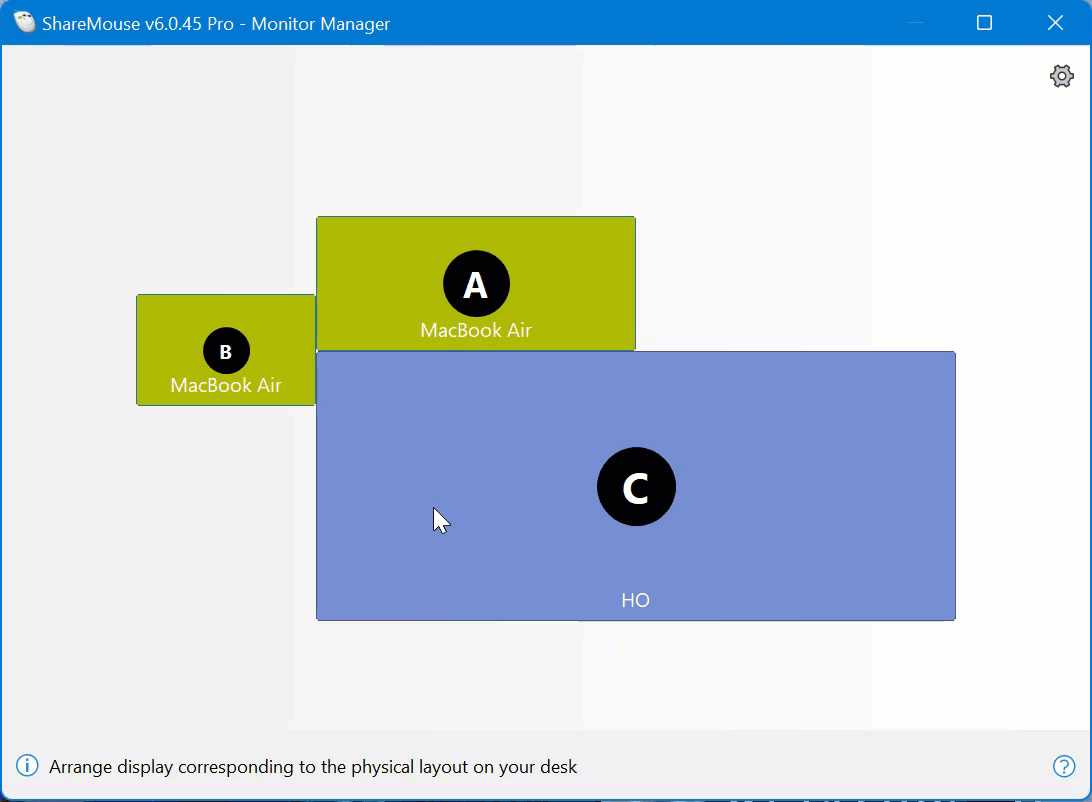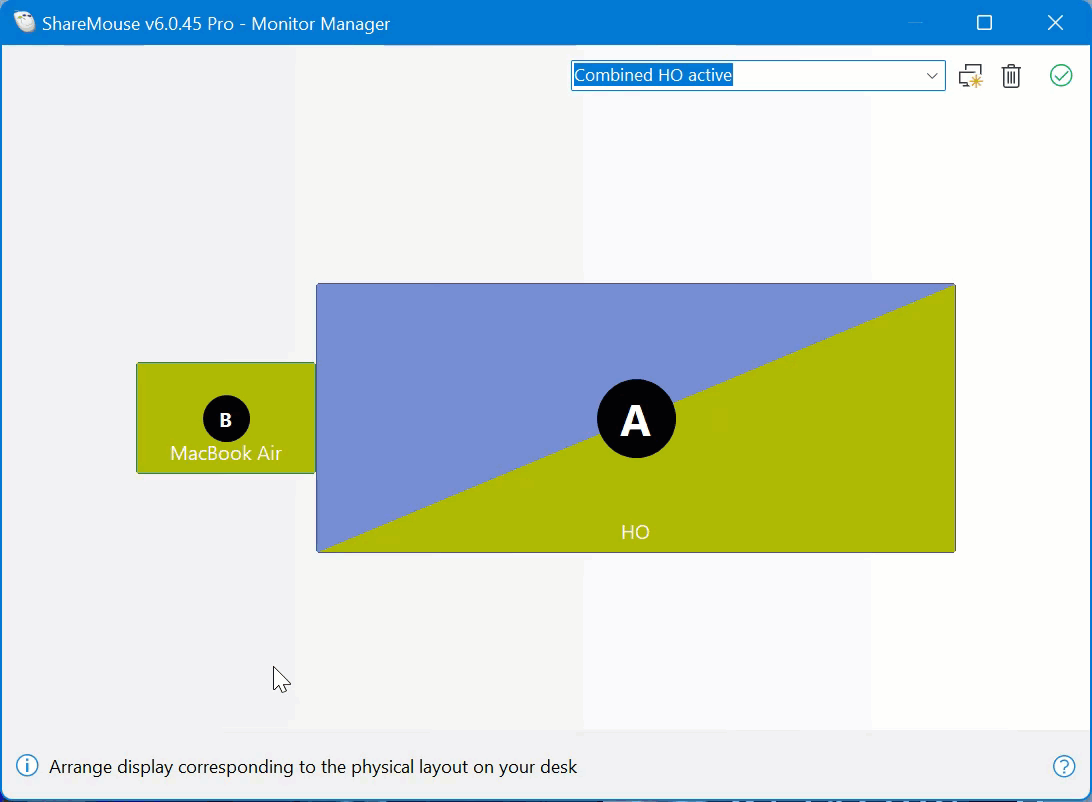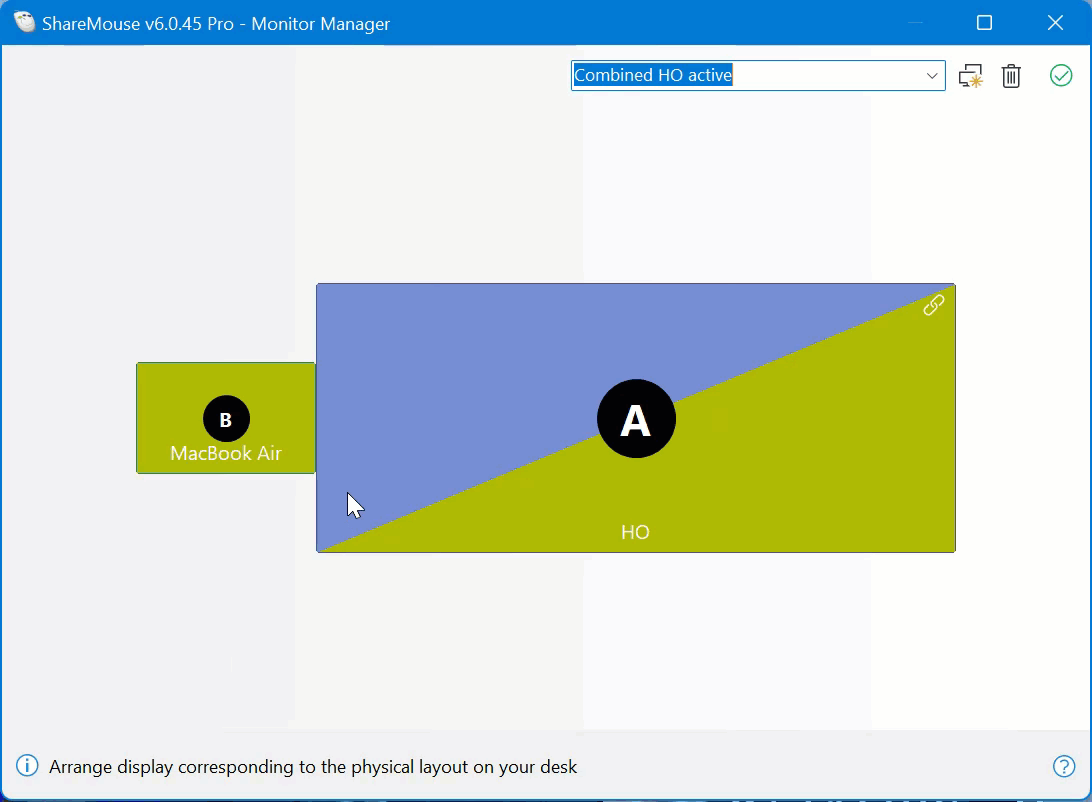This documentation refers to ShareMouse v7 beta. The documentation for production version 6 is available here.
Shared displays
ShareMouse supports displays that are shared between multiple computers through different hardware input sources.
Setting up a shared display
Initially, a display that is shared between multiple computers appears multiple times in the Monitor Manager—one icon for each computer it is connected to—because neither ShareMouse nor the computers can detect that they are using the same physical display. Each computer reports the display independently.
To configure a shared display:
- Identify the shared display by hovering over the monitor icons to view additional information that may help you recognize the correct display.
- Drag one icon of the shared display onto the other and release the mouse button:

ShareMouse merges the two symbols into a single shared display symbol, indicated by a diagonal pattern. It also creates separate display layouts for each input: one layout for the shared display when it is connected to one computer, and another layout for when it is connected to the other computer.
Each computer connected to the shared display may use a different screen resolution, so the icons may vary in size even though they represent the same physical display.
Display Input switching
If the shared display supports DDC ("Display Data Channel"), ShareMouse can automatically switch the hardware display input when switching between ShareMouse layouts.
To make this work, you need to tell ShareMouse which physical display input is used for each computer.
Assigning an input
To assign a physical input of a shared display to a computer:
- Open the Monitor Manager.
- Right-click a shared monitor symbol.
- Form the popup, select the computer and in the submenu, select the corresponding input from the list, reported by the display:

DDC support varies greatly between display manufacturers. Some vendors advertise DDC compatibility even though their devices do not implement it correctly. Physical input names (HDMI, DisplayPort, etc.) may also be incorrect or mixed up. For example, a USB-C/Thunderbolt port might appear as “DisplayPort 2” or “HDMI 2.” Because of this inconsistency, some experimentation is often required.
If the display fails to provide a valid list of inputs, ShareMouse falls back to a larger default input list. A shorter input list shown by ShareMouse generally indicates that the display has reported its inputs correctly.
We regret that ShareMouse cannot work around these issues. Due to the inconsistent quality of DDC implementations across displays, the hardware input switching feature is considered an experimental, complimentary function and is not part of the official product specification. Unexpected behavior may occur. If it does not work reliably for you, please do not use this feature.
ShareMouse uses DDC solely to switch the display’s input, but the software works without it. If DDC is unavailable, you can still change the input directly on the display’s hardware controls.
Removing an input assignment
To unassign a physical input of a shared display from a computer:
- Open the Monitor Manager.
- Right-click a shared monitor symbol.
- Form the popup, select the computer and the "" from the list of available inputs:

